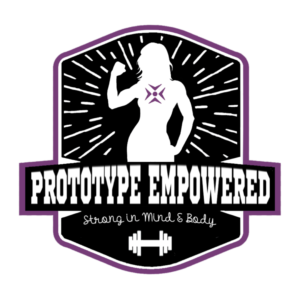By: Leah Hantman

Some physically active women are at risk for a group of signs and symptoms called the Female Athlete Triad. This disorder is a combination of 3 medical conditions consisting of disordered eating, amenorrhea (lack of menstrual periods for more than 6 months due to severe restriction/overexercise), and bone weakening ( leading to osteoporosis).
Women who have low confidence, disordered eating, and most specifically those participating in sports or other activities that emphasize endurance or a particular physical appearance may be more prone to these problems. The most common behaviors that contribute to the development of the Female Athlete Triad include cycles of food restriction and binge eating, preoccupation with weighing, measuring, calorie counting, or following a rigid, “clean” diet consisting of only the healthiest foods.

Disordered Eating includes any of the following…
-Anorexia (unwillingness or inability to take in enough calories to maintain a health-promoting weight)
-Bulimia (binge eating and then purging by vomiting or using laxatives excessively)
-Orthorexia (an unhealthy obsession with exercise and eating healthy, beyond the point of actually being healthy)
-Excessive exercise accompanied by anorexia nervosa or bulimia or orthorexia
-Normal food intake with excessive exercise
The Risks?
Disordered eating may lead to malnutrition and an inability to perform adequately in fitness and sports, class, and life in general. A lack of calories leads to fatigue, generalized weakness, decreased ability to fight off infections, inability to think clearly, and loss of concentration. People with disordered eating are also often depressed leading to social withdrawal and a general lack of interest in what used to be important. The long term consequences are much more grave.
Amenorrhea is a symptom of inadequate hormonal function due to a lack of nourishment and recovery. The hormone function in the body consists of a complex and delicate system. An imbalance in one hormone may throw off the others as well as wreaking havoc on the entire neuroendocrine system and the body. Perhaps the most serious consequence of this concurrent lack of estrogen that results from amenorrhea is osteoporosis.
Osteoporosis includes bone loss and lack of new bone formation. As bone density decreases it can lead to fractures and other complications. Fractures may occur in the hip, spine, foot, or other sites. They can occur without visible evidence or significant injury to other tissues. Severely weak bones can lead to breaks, impaired mobility, chronic pain, stunted growth, and a lack of independence. A return to normal eating and exercise patterns may lead to a return of normal periods and prevent further bone loss. The damage however is often irreversible if unhealthy behaviors are left unaddressed.
How could you tell if someone might have the triad?
Some of the warning signs consist of any of the following: exercising excessively with under-recovery, exercise without a set training goal and rigid structure, food restrictions, solitary or hidden eating, binging/throwing up, depression, counting calories or macronutrient values, decreased academic performance and absent periods.
Prevention: The first line of Defense
The best way to guard against the triad is to be realistic in what you expect from your body and yourself. Develop a sense of what a normal, healthy, active female body looks like. Avoid media stereotypes of the female body (media images are often airbrushed or manipulated to achieve a certain look). Choose sports that suit your individual body and interests. Decide not to risk your health for the sake of competitive success. Work with trainers and coaches that value your physical and emotional well-being rather than winning or succeeding at any cost. Recognize that you can be both healthy and successful in the athletic events of your choice and that you are beautiful as you are.
If you wish to work on your body image and balancing your total picture of health, reach out to Leah@Crossfitprototype.com. If you suspect you or someone you love is experiencing these behaviors and conditions, reach out to your primary care doctor who can help guide you through treatment.
